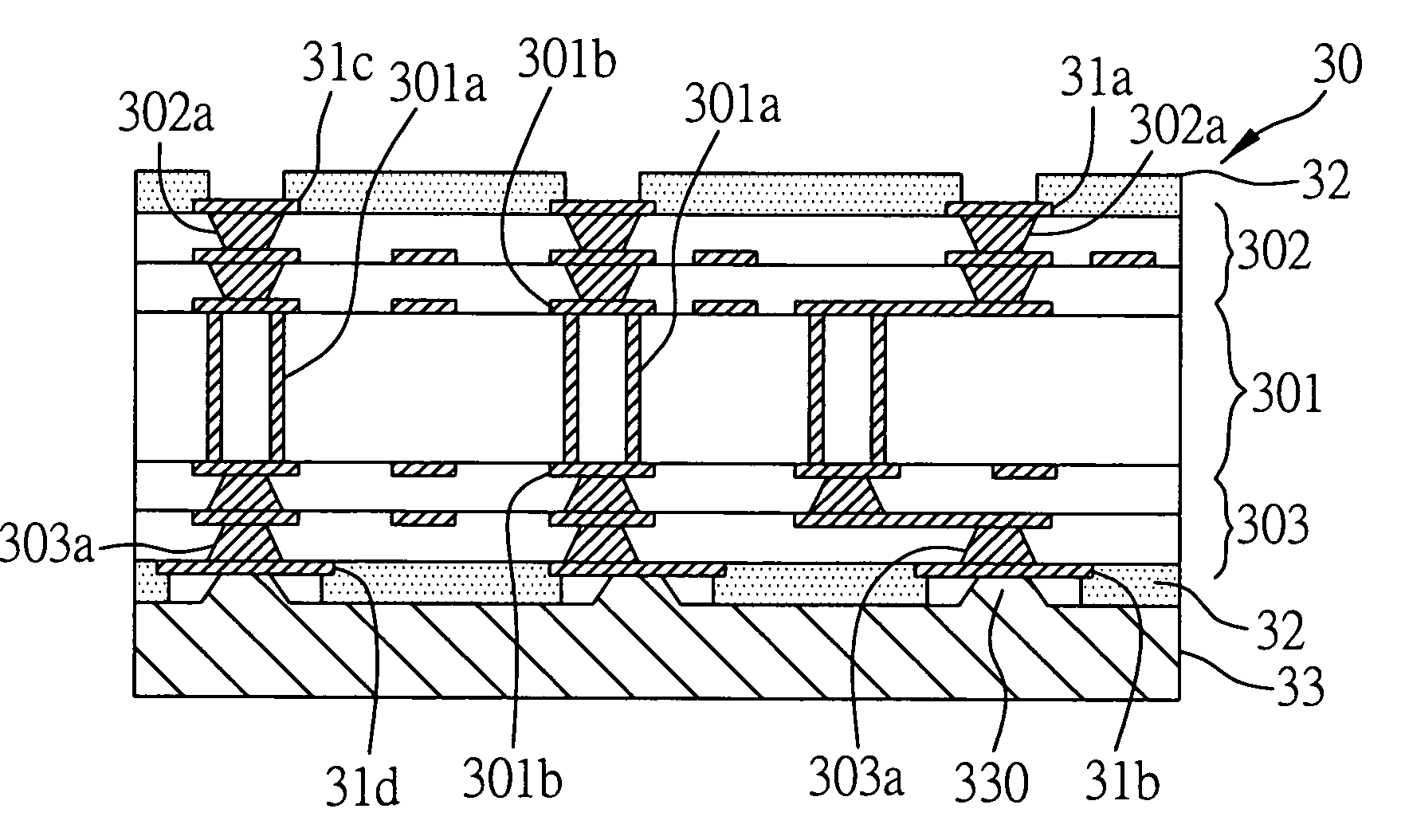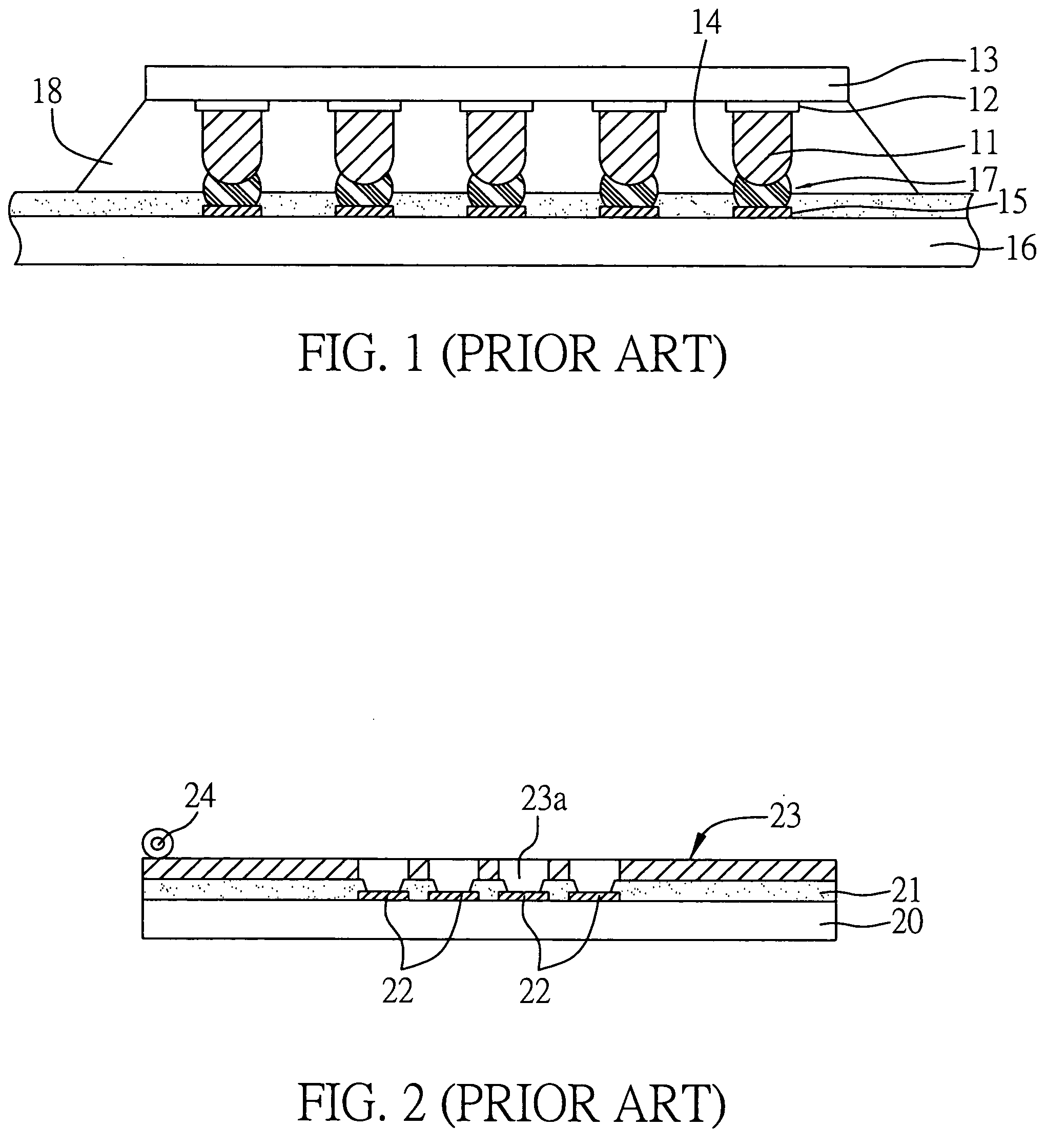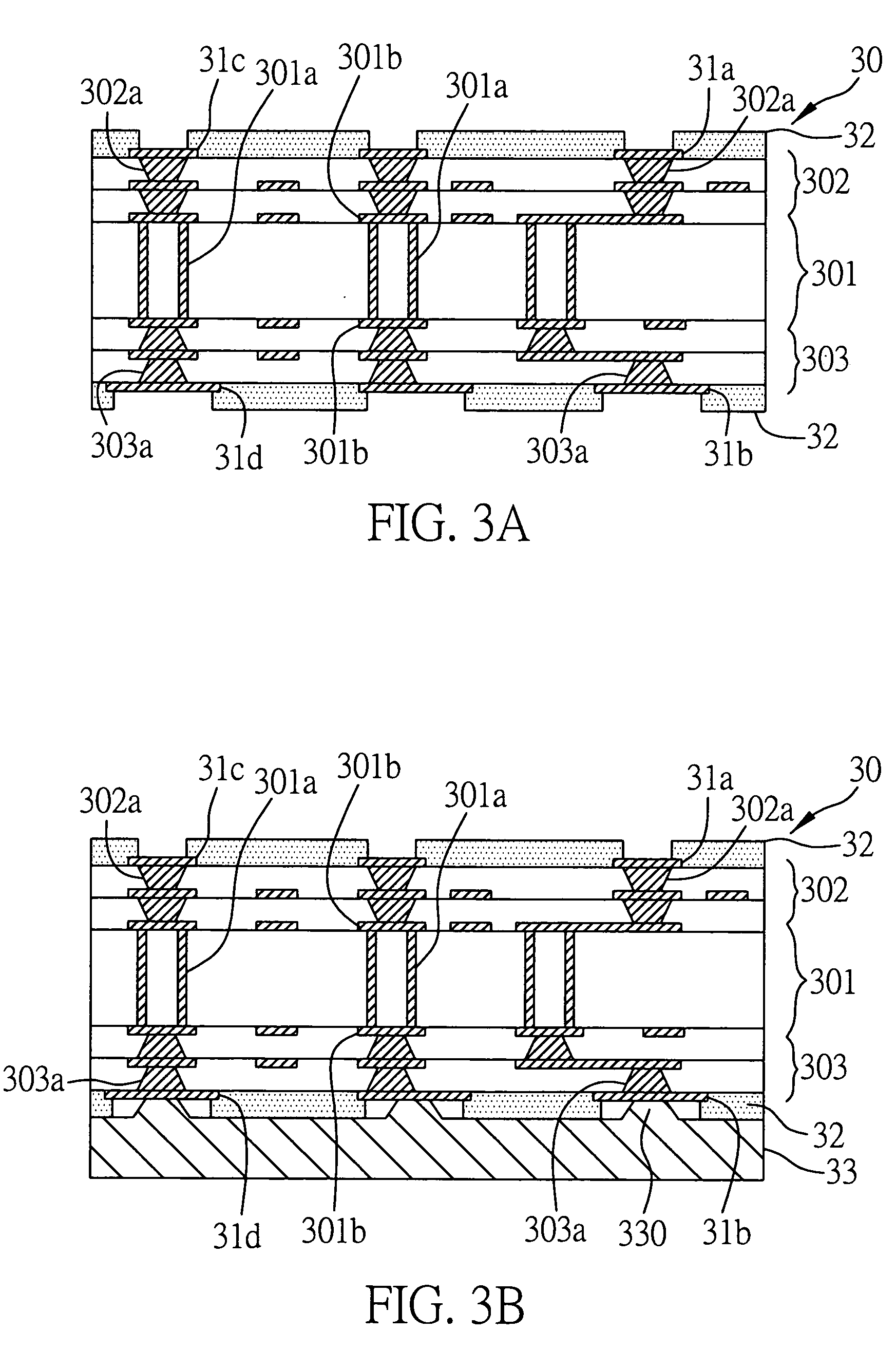Method for fabricating electrical connection structure of circuit board
a technology of electrical connection and circuit board, which is applied in the direction of manufacturing tools, printing element electric connection formation, and so on, can solve the problems of reducing fabrication reliability, unable to reduce stencil fabrication cost, and difficulty in allowing solder material to pass through the opening, so as to reduce fabrication reliability, eliminate fabrication bottlenecks, and reduce stencil fabrication cost
- Summary
- Abstract
- Description
- Claims
- Application Information
AI Technical Summary
Benefits of technology
Problems solved by technology
Method used
Image
Examples
Embodiment Construction
[0024]FIGS. 3A to 3D are cross-sectional views of a method for fabricating an electrical connection structure of a circuit board according to the first embodiment of the present invention.
[0025] Referring to FIG. 3A, a circuit board 30 having an internal circuit being completely electrically connected is provided. The circuit board 30 comprises a core circuit board 301 and a plurality of build-up circuit structures 302 and 303 formed on top and bottom surfaces of the core circuit board 301. Also, a plurality of pads 31a and 31b are formed on top and bottom surfaces of the circuit board 30. A plated through hole 301a formed penetrating through the core circuit board 301 is used for electrically connecting circuits 301b located on the top and bottom surfaces of the core circuit board 301. Similarly, a plurality of conductive vias 302a and 303a are used for electrically interconnecting the build-up circuit structures 302 and 303 respectively located on the top and bottom surfaces of t...
PUM
| Property | Measurement | Unit |
|---|---|---|
| conductive | aaaaa | aaaaa |
| electrically active area | aaaaa | aaaaa |
| electrically inactive | aaaaa | aaaaa |
Abstract
Description
Claims
Application Information
 Login to View More
Login to View More - R&D
- Intellectual Property
- Life Sciences
- Materials
- Tech Scout
- Unparalleled Data Quality
- Higher Quality Content
- 60% Fewer Hallucinations
Browse by: Latest US Patents, China's latest patents, Technical Efficacy Thesaurus, Application Domain, Technology Topic, Popular Technical Reports.
© 2025 PatSnap. All rights reserved.Legal|Privacy policy|Modern Slavery Act Transparency Statement|Sitemap|About US| Contact US: help@patsnap.com



